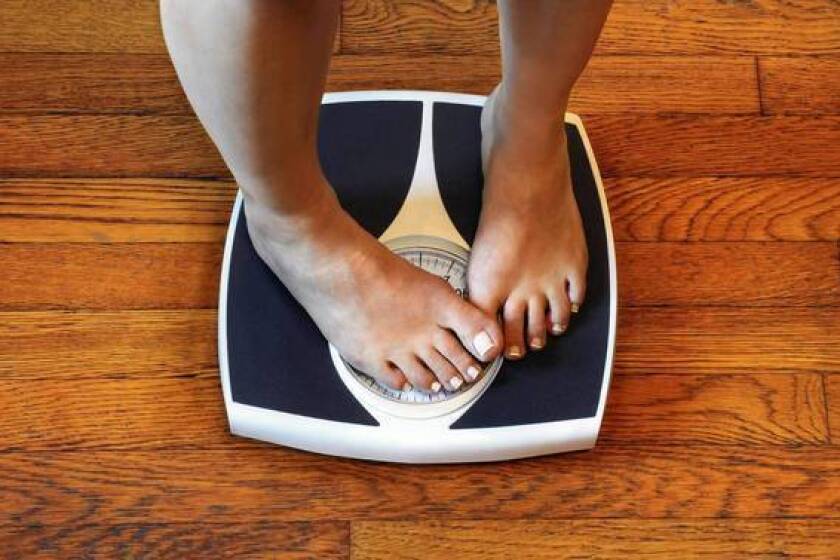U.S. deaths are about 300,000 higher than expected since the coronavirus arrived

- Share via
The U.S. death toll from COVID-19 is high any way you look at it — and a new report from researchers at the Centers for Disease Control and Prevention offers yet another way to look at it.
If you add up all the people who have died in the U.S. for any reason since late January and compare that figure to the tally from previous years, you’ll find that there have been roughly 300,000 “excess deaths” since the coronavirus came to America. Two-thirds of those deaths can be attributed to COVID-19, the report says.
The tally covers the weeks from Jan. 26 through Oct. 3. A team from the CDC’s National Center for Health Statistics took the actual number of deaths in those weeks in each of the five previous years and used them to estimate the expected deaths for the same weeks in 2020. Then they compared those expected deaths to the actual deaths reported to the National Vital Statistics System by all 50 states and the District of Columbia.
The result: During those 36 weeks, an estimated 299,028 more people died in the U.S. than would have been the case in a normal year. That includes 198,081 people whose deaths were blamed directly on COVID-19.
Even a more conservative approach based not on average deaths in years past but the high end of the typical range put the total number of excess deaths in 2020 at 224,173, the team reported Tuesday in the CDC’s Morbidity and Mortality Weekly Report.
About 110,000 Californians have purchased a firearm since the start of the COVID-19 pandemic, including about 47,000 first-time gun owners, a survey finds.
The report authors also calculated how much higher the weekly death tolls were in 2020 compared with the expectations based on averages from years past. By this measure, excess deaths peaked during the week of April 5-11, when actual deaths were 40.4% higher than would have been expected in a normal year.
A second peak occurred during the week of Aug. 2-8, when actual deaths were 23.5% higher than they should have been.
The U.S. has experienced excess deaths every single week since March, the authors noted.
The researchers also examined excess death rates by age group and by race and ethnicity.
It’s been well established that the older you are, the higher the risk of dying of COVID-19. But the oldest Americans aren’t the ones who experienced the biggest jump in excess deaths. That dubious distinction goes to adults ages 25 to 44 — deaths for people in this age group were 26.5% higher than expected over the 36-week period.
By comparison, based on averages from 2015 through 2019, deaths in 2020 were:
• 2% lower than expected for Americans under the age of 25.
• 14.4% higher for Americans ages 45 to 64.
• 24.1% higher for those ages 65 to 74.
• 21.5% higher for those ages 75 to 84.
• 14.7% higher for those ages 85 and up.
All racial and ethnic groups saw higher than expected death tolls since late January, but the magnitude of these increases varied greatly, the researchers found. Compared with their expectations for a normal year, actual deaths in 2020 were:
• 53.6% higher for Latino Americans.
• 36.6% higher for Asian Americans
• 32.9% higher for Black Americans.
• 28.9% higher for Native Americans and Alaska Natives.
• 11.9% higher for white Americans.
The analysis included all deaths in the 50 states and the District of Columbia, regardless of whether the victims lived in the U.S. or were residents of other countries.
The Centers for Disease Control and Prevention said people who are merely overweight, not just the obese, may be at high risk of a serious case of COVID-19.
Although the CDC also counts COVID-19 deaths in more direct ways, there’s value in tabulating excess deaths, the researchers wrote. The result may provide a more comprehensive picture of the pandemic’s toll by including people who died of COVID-19 but were never tested for a coronavirus infection. In addition, it can capture deaths that were caused by the virus indirectly.
The findings may help public health officials hone their efforts to reduce new infections and eliminate the health inequities made plain by the pandemic, the researchers wrote.
“CDC continues to recommend the use of masks, frequent handwashing, and maintenance of social distancing to prevent COVID-19,” they added.









